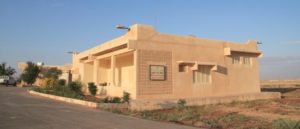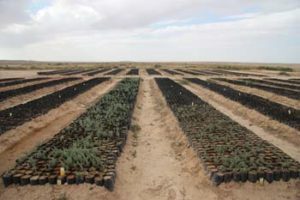Wadi Al-A’azib Research Station
Site and climate:
It is located in the western part of the Syrian steppe, about 110 km away from the east of Hama city, at an altitude of 420 m above the sea. Its climate is hot and dry in summer and cold and rainy in winter; with a drying period that starts from May and lasts until October. Its rainfall average is estimated at 188 mm annually; the rainfall is stormy and heavy over short periods. Its annual evapotranspiration average is more than 2000 mm, while the maximum and minimum temperatures are more than 45o and less than 00 respectively. Its soil is clay, poor with organic matter, poor with P, N and K elements, rich with CaCo3, moderate saline and alkaline-tending.
Objective:
Improve rangeland productivity in the Arab steppes, achieve sustainable development in the Arab rangelands and improve the scientific and applied capacities of the human resources in the field of rangeland development in the Arab countries.
Infrastructure:
- Two enclosures; one is located in the eastern side and has a sedimentary soil and a group of Ammi and Salsola plants, and the other is located in the western side; in the highland area, and has a lime soil and a group of Artemisia and Poa plants.
- 22 enclosures for studying vegetative cover changes through gradual transition between lime soils and sedimentary soils.
- A gene bank for pastoral plants that are tolerant to biotic stresses, particularly drought.
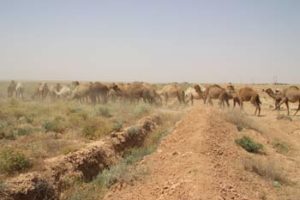
- One enclosure for pastoral seeds production.
- One pastoral nursery and one water source for irrigation.
- A training center for 20 trainees to rehabilitate the technical staff in the field of rangeland development in the Arab countries, in addition to an appropriate accommodation.
- Administrative offices and all necessary equipment and supplies for researches, studies and pastoral seeds collection and propagation.
Activities:
- Conduct studies and researches on rangeland habitat and management, and study the adaptive trait of local and exotic plant species.
- Conduct studies on wild plants in arid environments and the potential of their development and use in the field of environmental improvement or pastoral or economic investment.
- Apply rain water harvesting techniques to restore and improve pastoral vegetative cover (protection, sowing, and seedling cultivation).
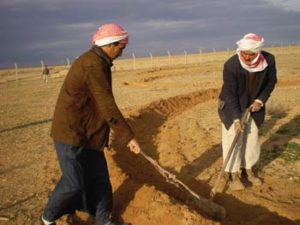
- Conduct studies on artificial seeding of several local and exotic species under the conditions of arid zones.
- Study the mechanisms of germination and biological characteristics of important pastoral species, and select the best ones to be used in Arab rangeland development programs.
- Study the vegetative cover changes and the plant succession in arid environments (within enclosures), and their roles in sustainable development.
- Study the appearance variation of some environmental types of
- Cultivate Pistacia Atlantica on contour lines in the plain area.
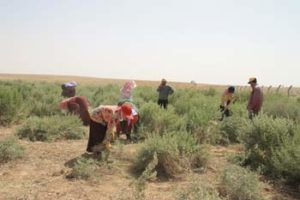
- Cutivate Dachtylisglomerata on contour lines.
- Germinate and cultivate the seeds of Onobeychis on contour lines.
- Evaluate the pastoral and nutritional value of Atriplex, and study its impact on sheep (as Atriplex shrubs were used to carry out digestion experiments for Awassi sheep).
